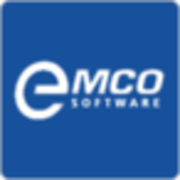Software Distribution refers to the process of delivering software applications to users. It involves managing the delivery, installation, and tracking of software across multiple devices or platforms.
Software Distribution solutions streamline the deployment and management of applications, ensuring consistency and security across different environments. These solutions are essential for organizations that require reliable delivery methods and tools for maintaining software lifecycle management. They offer features like automated deployment, compliance monitoring, and integration with existing IT infrastructure, which are crucial for reducing operational complexity.
What are the key features of this solution?In industries like healthcare and finance, Software Distribution solutions are implemented to ensure that applications meet strict compliance standards and security protocols. These sectors rely on precise and efficient software management to protect sensitive data and improve service delivery.
Software Distribution is helpful for organizations as it simplifies the complexities of software deployment and maintenance, allowing IT departments to focus on strategic initiatives while ensuring stable and secure application performance.
| Product | Market Share (%) |
|---|---|
| Sonatype Nexus Repository | 20.3% |
| EMCO MSI Package Builder | 19.4% |
| Microsoft Configuration Manager | 18.1% |
| Other | 42.199999999999996% |












Ensuring secure Software Distribution involves using encryption to protect data during transit and at rest. Implementing authentication mechanisms verifies the identity of users or systems accessing the software. Regularly updating your distribution software with patches and security updates helps mitigate vulnerabilities. Utilizing digital signatures to verify the integrity of the software ensures that it hasn't been tampered with during distribution. Employing these strategies can significantly reduce security risks.
What are the benefits of using automated Software Distribution tools?Automated Software Distribution tools streamline the process of sending software across multiple devices, saving you time and reducing the potential for human error. These tools enable consistent software deployment, ensuring that all systems are running the same versions, which simplifies maintenance and troubleshooting. Automation allows you to schedule deployments during off-peak hours, minimizing disruptions and optimizing productivity. Enhanced reporting capabilities offered by these tools provide visibility into the distribution process, helping you track success and quickly identify issues.
How can cloud-based Software Distribution improve your workflow?Cloud-based Software Distribution offers scalability, allowing you to extend distribution capabilities as your company grows. By leveraging the cloud, you can reach a global audience without the need for extensive on-premises infrastructure. This accessibility enhances collaboration, as team members can access and deploy software from anywhere, given internet connectivity. Cloud solutions often come with advanced analytics and monitoring tools, empowering you to make informed decisions based on real-time data.
What are best practices for managing Software Distribution licenses?Maintaining an accurate inventory of all software licenses and their respective agreements prevents non-compliance issues. Employing a centralized license management system helps you track usage and renewal dates effectively. Regularly auditing your licenses ensures you are only using software that is necessary for your operations, potentially reducing costs. Training your team about the importance of compliance and the details of your licensing agreements can help prevent accidental violations.
How can you optimize Software Distribution for remote teams?To optimize distribution for remote teams, ensure that your systems are accessible without compromising security. Implementing a user-friendly portal where remote employees can download necessary software simplifies the process. Utilizing robust version control ensures that all team members are using up-to-date software, preventing compatibility issues. Providing thorough documentation and support channels can assist remote workers in addressing technical challenges quickly.